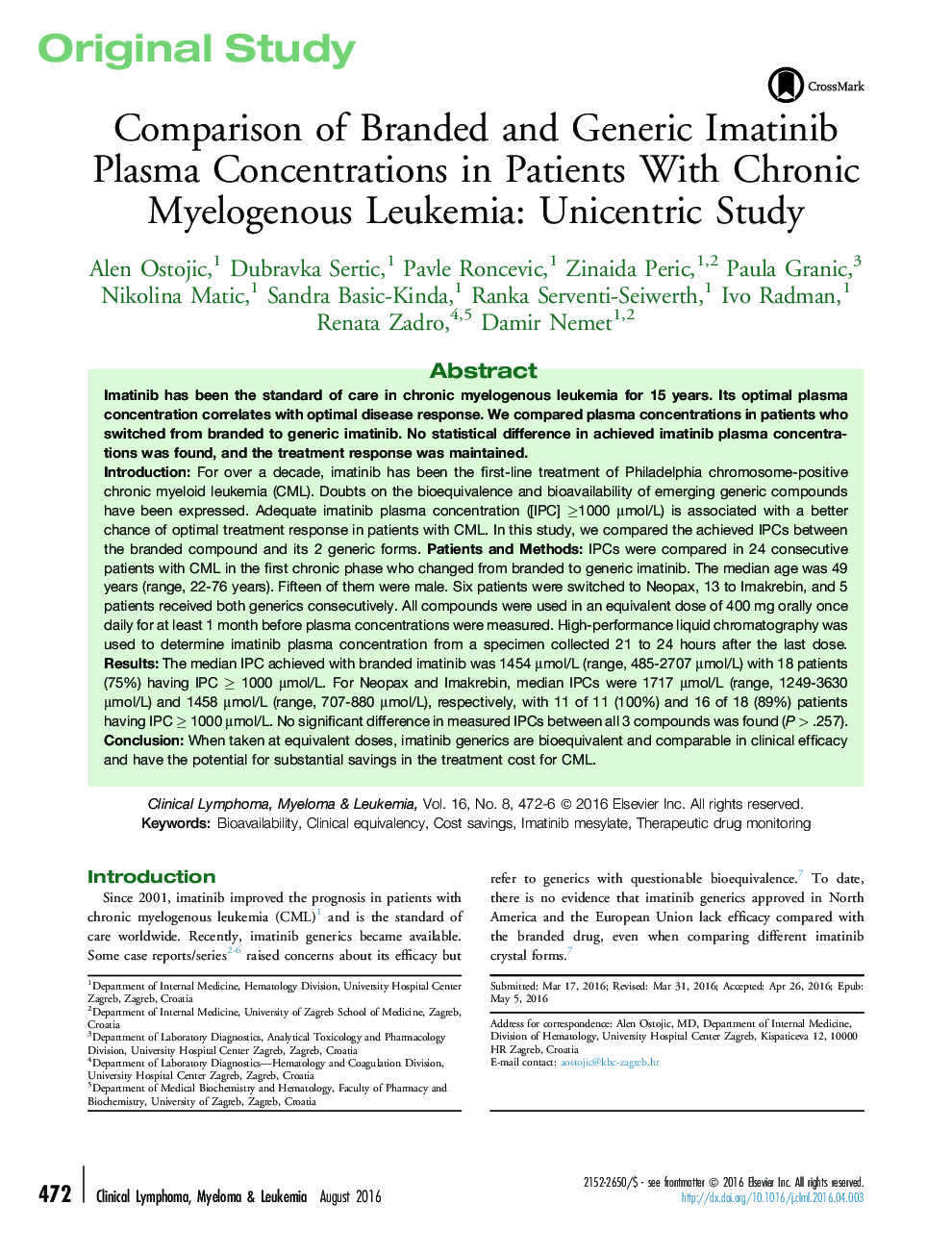| Article ID | Journal | Published Year | Pages | File Type |
|---|---|---|---|---|
| 2754228 | Clinical Lymphoma Myeloma and Leukemia | 2016 | 5 Pages |
IntroductionFor over a decade, imatinib has been the first-line treatment of Philadelphia chromosome-positive chronic myeloid leukemia (CML). Doubts on the bioequivalence and bioavailability of emerging generic compounds have been expressed. Adequate imatinib plasma concentration ([IPC] ≥1000 μmol/L) is associated with a better chance of optimal treatment response in patients with CML. In this study, we compared the achieved IPCs between the branded compound and its 2 generic forms.Patients and MethodsIPCs were compared in 24 consecutive patients with CML in the first chronic phase who changed from branded to generic imatinib. The median age was 49 years (range, 22-76 years). Fifteen of them were male. Six patients were switched to Neopax, 13 to Imakrebin, and 5 patients received both generics consecutively. All compounds were used in an equivalent dose of 400 mg orally once daily for at least 1 month before plasma concentrations were measured. High-performance liquid chromatography was used to determine imatinib plasma concentration from a specimen collected 21 to 24 hours after the last dose.ResultsThe median IPC achieved with branded imatinib was 1454 μmol/L (range, 485-2707 μmol/L) with 18 patients (75%) having IPC ≥ 1000 μmol/L. For Neopax and Imakrebin, median IPCs were 1717 μmol/L (range, 1249-3630 μmol/L) and 1458 μmol/L (range, 707-880 μmol/L), respectively, with 11 of 11 (100%) and 16 of 18 (89%) patients having IPC ≥ 1000 μmol/L. No significant difference in measured IPCs between all 3 compounds was found (P > .257).ConclusionWhen taken at equivalent doses, imatinib generics are bioequivalent and comparable in clinical efficacy and have the potential for substantial savings in the treatment cost for CML.
